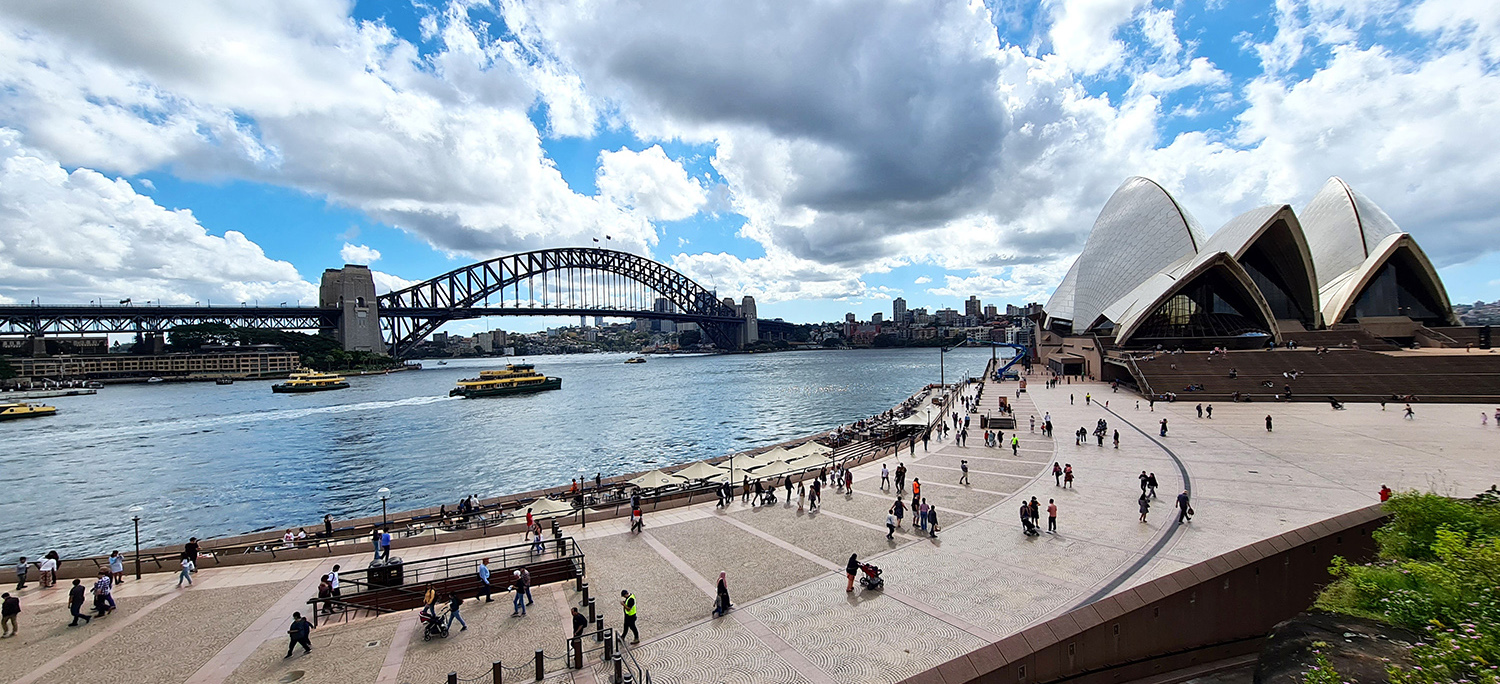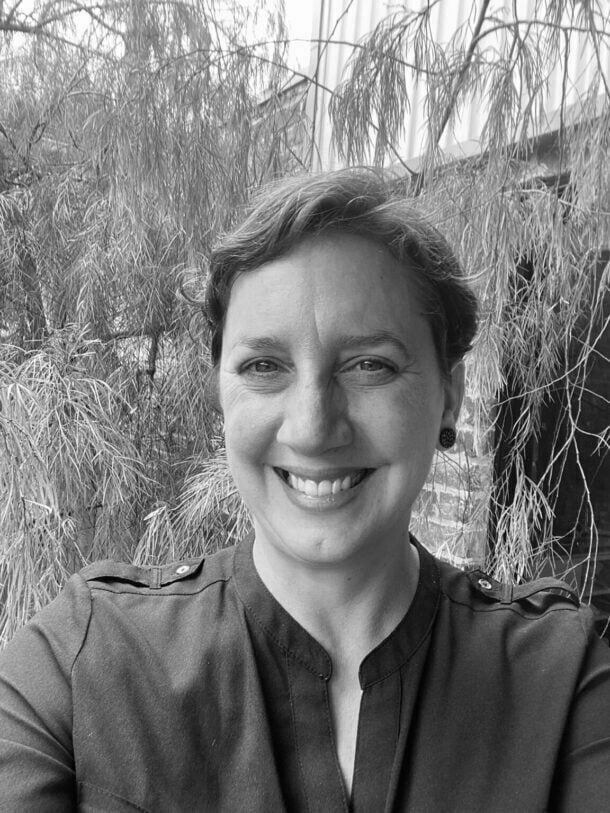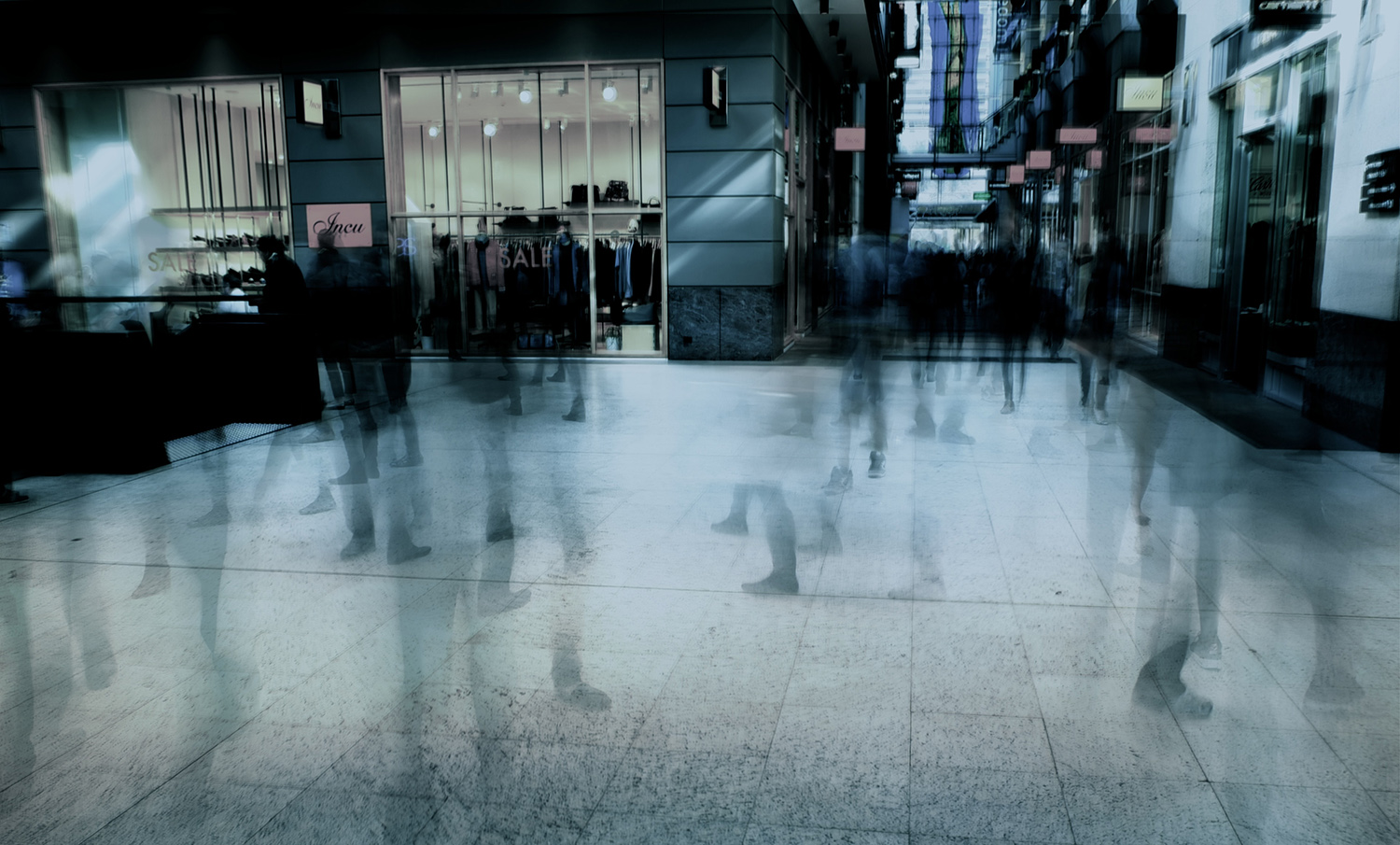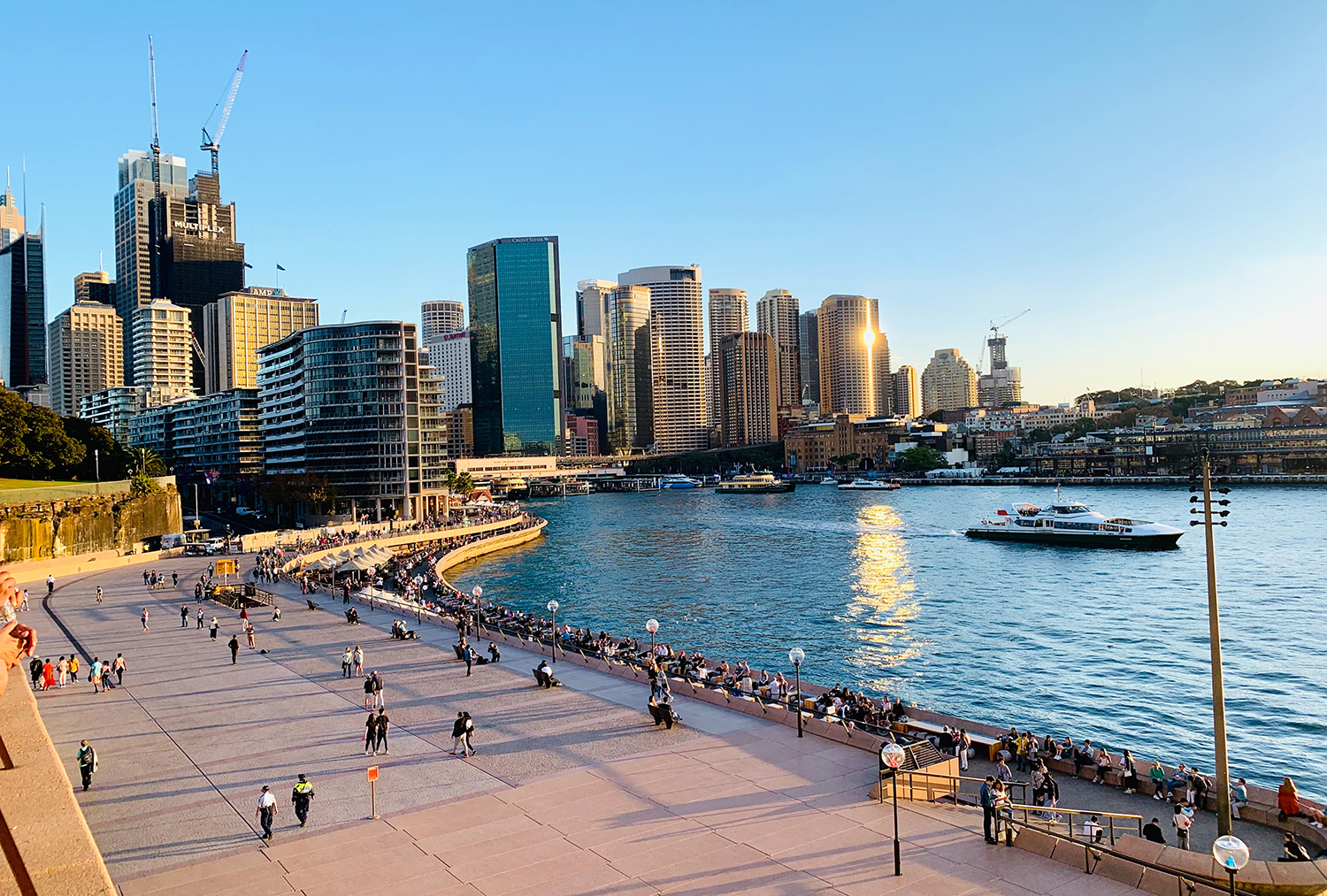What work is being done to make Sydney more functional and inclusive? In a new interview for Parlour, Fae Sarshogi discusses inclusivity, community engagement, feminist cities, and design considerations in public places with Sarah Christie, Senior Manager of Design and Place at Placemaking NSW.

Inclusivity is an increasingly prominent topic in design conversations. While Sydney and other Australian cities are not the most inclusive places in the world, steps are being taken to bring us closer to that title.
To understand the thinking behind the shaping of our public places and waterfront precincts, I recently met with Sarah Christie, Senior Manager of Design and Place at Placemaking NSW.
Sarah is a strong believer in “making places functional for people”, “thinking on the margins” and involving a range of user groups, including marginalised communities, to ensure that “a diverse range of voices can be heard”. For Sarah, “an inclusive place means that all people can use the space and engage with it, even if it might be in a slightly different way to someone else”.

This interview touches on topics such as community engagement, feminist cities, and design considerations in public places. Sarah believes that “Inclusive placemaking should be a given”, and comments that “there is a level of empathy we need to bring to design that helps us create places that people can actually use, dwell in and enjoy”.
Community engagement
Fae: Engaging with the community and different stakeholder groups is a big part of inclusive placemaking. At the same time, there are a lot of planners out there who believe that it’s impossible to meet all needs. I’ve heard “you can’t keep everyone happy” so many times. What are your thoughts on this?
Sarah: You can’t keep everyone happy, but you can keep most people happy. It is important to make sure that everyone has been heard and make the effort to understand what people need or want in a place. We have to always take a step back and ask ourselves, “what and who are we doing this for?”
At the end of the day, all the work we do is for the community. So, we need to listen to what the community is telling us and really understand their needs. We need to ensure that we’re getting a really broad cross-section of input by reaching out to a diverse group of people, including minorities and marginalised groups.
Most of the time the things the community ask for are not that hard to deliver. When it comes to public places, people typically want somewhere easily accessible and enjoyable to go to with their family and friends. But something so simple often gets lost in the design. It’s important to keep reminding ourselves that we’re not designing for designers, we’re designing for people – so people need to be at the heart of what we do.


Is it fair to say that in private development sometimes the financial outcome of the project outweighs the long-term social and cultural benefits?
Most people, whether in government or the private sector, understand that a successful place is successful for everyone. Making sure that people are onboard is a good way to ensure the community uses your place straight away, no matter what it is.
Hopefully, most people understand the value of engagement. We have engagement specialists who do amazing work, but this is not a skillset that designers necessarily have or get to use often. There is also the overarching problem that aspects that help make places inclusive are often the things that designers want to design out – handrails, tactiles, comfortable seats and the like. These things are often seen as clutter. With that mindset, you’re never going to achieve an inclusive outcome because you’re starting at the wrong place.
All those little pieces come together to make a place really inclusive. We need them all working together and valued as integral to the design.
The other thing I hear a lot is that the design needs to be compliant. It just stops there. This box-ticking mentality prevents us from developing a great understanding of how a place will be used and how we can make it the best place it can be for as many people as possible.
How can you make sure that all those diverse groups in the community have been identified and involved?
We need to understand the place, the people who visit and use it, and those who we want to attract – and then reach out to those people. To be more aspirational, we need to think about the future and how this place will change. We need to consider new users and visitors and ensure that we’re talking to them as well.
To get meaningful input we need to provide a diverse range of opportunities for people to engage. Without this, it is difficult to get a true picture of who might actually use the space.
With projects like waterfront precincts, there’s also a group not present for consultation – people visiting from overseas. How do you address this?
Exactly. So, in that example we use the persona of an international tourist who is only here for a day. Even if you can’t directly speak to those people, you still need to consider what kind of experience they’re going to have and what they would be looking for, as newcomers to the city.

We often assume that everyone else has the same knowledge about our city as we have. Sydney is quite a hard city to get around because of its topography, and there’s a lot going on. So, it’s important to step back and look at it from the perspective of someone who is unfamiliar with the city.
I’ve seen situations where, in the later design stages of larger projects, even the development manager doesn’t know who the stakeholder groups are. How do you make sure the engagement outcomes remain intact throughout the project, especially in large-scale developments?
Deep engagement at the early strategic phases of the project can inform the vision for the project. This vision should then be core to the briefs for consultants, and embedded throughout the design process. If you’ve heard what people want and what matters to them early enough, it can feed through the whole project. I think that’s the best way to do it, because then it will guide the whole life of the project, not just the individual parts.
This can also help mitigate the risk of consultation fatigue, especially when you over-consult. When you make sure that the input from community and stakeholders really informs the project at a powerful level, the engagement is more meaningful.

Feminist cities
When we talk about feminist cities, is there anything that is often left out? We know that our cities were fundamentally designed by men and for men. How can we be more inclusive of women and gender-diverse people?
I’m drawing on my own experience, having kids and prams and trying to breastfeed in public and all those sorts of things. What seems to be forgotten is how women and gender-diverse people fundamentally get to a place, move through it, and use and enjoy it. We also need to ensure that places feel safe for everyone across all times of day and night.
There are so many little things that can be done to make cities better, but I don’t know if designers necessarily have these things at the forefront when they’re designing a place – things like comfortable seats with armrests so you can breastfeed, or to help an older person to more easily push themselves up.
When I was heavily pregnant, I was working on a project where the only toilets in that park were right at the top of a steep hill. It was a good reminder for me, as I struggled up that hill regularly just to use the bathrooms, that we have to do better to ensure that people can easily access places and facilities, regardless of their physical constraints.
This reminds us that someone who doesn’t have the physical strength is often at a disadvantage. Bad design can really impact people’s work and their lives.
Exactly. That person might not ever come back to that place. That’s a lost opportunity.
It’s often the things we take for granted that can have the biggest impact. Where are the toilets and how easy are they to get to? Where are the seats? Are they in shade? These things feel like they should be 101, ingrained in everyone, but too often they get lost along the way.
We don’t think about these things until we are in the situation and experiencing them.
We’ve all made mistakes as designers. There are things that you look back on and would do differently now. I think it’s very important to imagine living in and using the space that you’re designing, but it’s also about taking a step back and considering that your experience of a place might not be the same as everyone else’s.
So, instead of generalising an experience, we need to think about the specifics. For example, if we’re designing for disability, we need to be mindful that there are different forms of disability – are we considering them all?
Or are we just ticking a box? You’ve really got to think about that experience, and if you don’t have that experience you then need to get someone who does and is willing to share their knowledge to help inform the design. Ask, “Have we got this right? Does this meet your needs?”

Public spaces & placemaking
What could private developers and placemakers learn from government projects and apply to their work?
As government place managers, we are privileged to care for and maintain wonderful public places. We also understand firsthand the sorts of things that can happen when people start using a place. People can misuse things. They can fall over things. They can vandalise things. Anything can happen.
It is important to share this knowledge, and to place more value on the management and maintenance of our places. It needs to be more prominent and more important in the design process. Operational issues are not sexy, but designers need to understand the limitations and how things are managed and maintained.
My next question is a little more personal – as a Sydneysider, what are your wishes for Sydney as an all-inclusive city?
For me, connection with Country is a big part of truly inclusive design.
I was looking at a map today of all the reclaimed foreshore, all the areas of the water that have been taken. We have so many points on the harbour where you’re so close to the water, but you just can’t touch it. One of the things I hope to see is how can we get back to water. It might be a pipe dream but how could we return some of that back? Being able to connect with the natural aspects of Sydney would be amazing. We’ve got lots of development, but how do we start breaking down some of what has happened in the past? Can we actually get closer and touch the water across the harbourfront rather than just standing back from it?
This is starting to happen in lots of places. But it would be amazing to see that roll out across all of Sydney. It makes you feel more connected and part of the place, but it’s also cooling and vital to the health and wellbeing of the city.
The other thing I would like to see is extensive greening of Sydney. We’ve had a pretty good start but we can keep pushing innovation on how we can plant more trees. There is often resistance – it’s too hard and too expensive – but it’s also too important. We’ve got to make it happen.
When you talk about building inclusive cities, how do you see us doing that at a human scale?
So many parts of Sydney aren’t human scale. They’re dominated by buildings at a huge scale. So, a big part of making places not just inclusive, but also welcoming, is about reducing the scale and creating intimate moments in a big city.
This is a challenge, but it’s also the exciting part of being a designer – to think about how you can make these things happen. This goes back to inclusiveness – some people want quiet, intimate spaces; others are here for big events and enjoy lots of noise and crowds. There’s always going to be tension across the city, because there are so many things going on at any given time, but it can still be inclusive.

Building on the character of a site also helps make our special places even more special. I remember when I was in local government, I worked on a lot of playgrounds. I would hear feedback that a playground is great, but needs a fence, because “my son, who has autism, is a runner. He will just run without any kind of awareness of any hazard”.
So, although you can’t please everyone, you can try and work out ways to do things differently. That’s the challenge of being a designer. What would meet that particular need? Maybe we don’t want fences everywhere, but what else could we do that would help? Can we consider alternative approaches? How do we think about what we could design in?
I’d like to go back to your previous comment because I feel like it answers a question that I always ask myself about Sydney. Why does Sydney come across as a stand-offish city? I love this city and it’s gorgeous, but I can’t always feel it, or connect to it, especially as someone who hasn’t lived here long. Perhaps that lack of intimate moments and diverse experiences is the answer?
I think about the fundamentals of making it a beautiful city for people to move through, and making sure there are a lot of trees. There are so many parts of the city that are still so hot. It’s really open and exposed and it’s clear that people aren’t considered. If they were, there’d be a tree and shade. So, we need to think about how you can reset that – not just from a building focus but also looking at what is happening at the street level, and how people move around the city.
That’s right. Designing the urban rooms, the spaces between the buildings.
Exactly. We are doing a design brief and one of my colleagues had drawn a map with the line at the edge of the buildings. Seeing it on the map, I thought we need to move the line so that when the designers are considering how this street might work, they go beyond the facade of the buildings. Instead of stopping at a boundary line, we need to consider how the whole thing comes together. Drawing lines on a map doesn’t help. It’s like saying “my project is here and I’m not going to worry about anything else around it”.
We need to make sure that we’re very clear in the briefs to designers that we want to understand a project in its whole context. Without understanding where it fits in, you can’t really understand what you are trying to achieve. The public domain is the thread that connects it all.
My last question, do you have a favourite place, a happy place in or around Sydney?
Well, it’s not exactly in Sydney, but the Royal National Park is my happy place. There are so many beautiful places to swim and spend time there. I find that I need to get away and be totally in nature. I have lots of wonderful memories there, sharing special moments with friends and family.

Sarah Christie is the Senior Manager Design and Place at Placemaking NSW. A landscape architect with extensive experience across local and state government roles, she is passionate about delivering great places for all to enjoy. Her approach seeks to collaboratively embed design excellence across all stages of projects with a focus on place based and values led outcomes.
Fae Sarshoghi is passionate about the interrelations of architecture and social sciences, with a focus on inclusive placemaking and feminist cities. Fae was born in Iran and spent most of her life there, where she practised interior design. Coming to Australia, Fae worked in the interior fit out space for a few years and then started pursuing her passion in urban design while working on wayfinding projects. Currently studying her Masters in Urban Design at UTS, she has started her own consultancy in inclusive placemaking and is open to collaboration opportunities where she can bring her research into practice and contribute to transforming our cities into places where everyone feels connected and welcome.




















